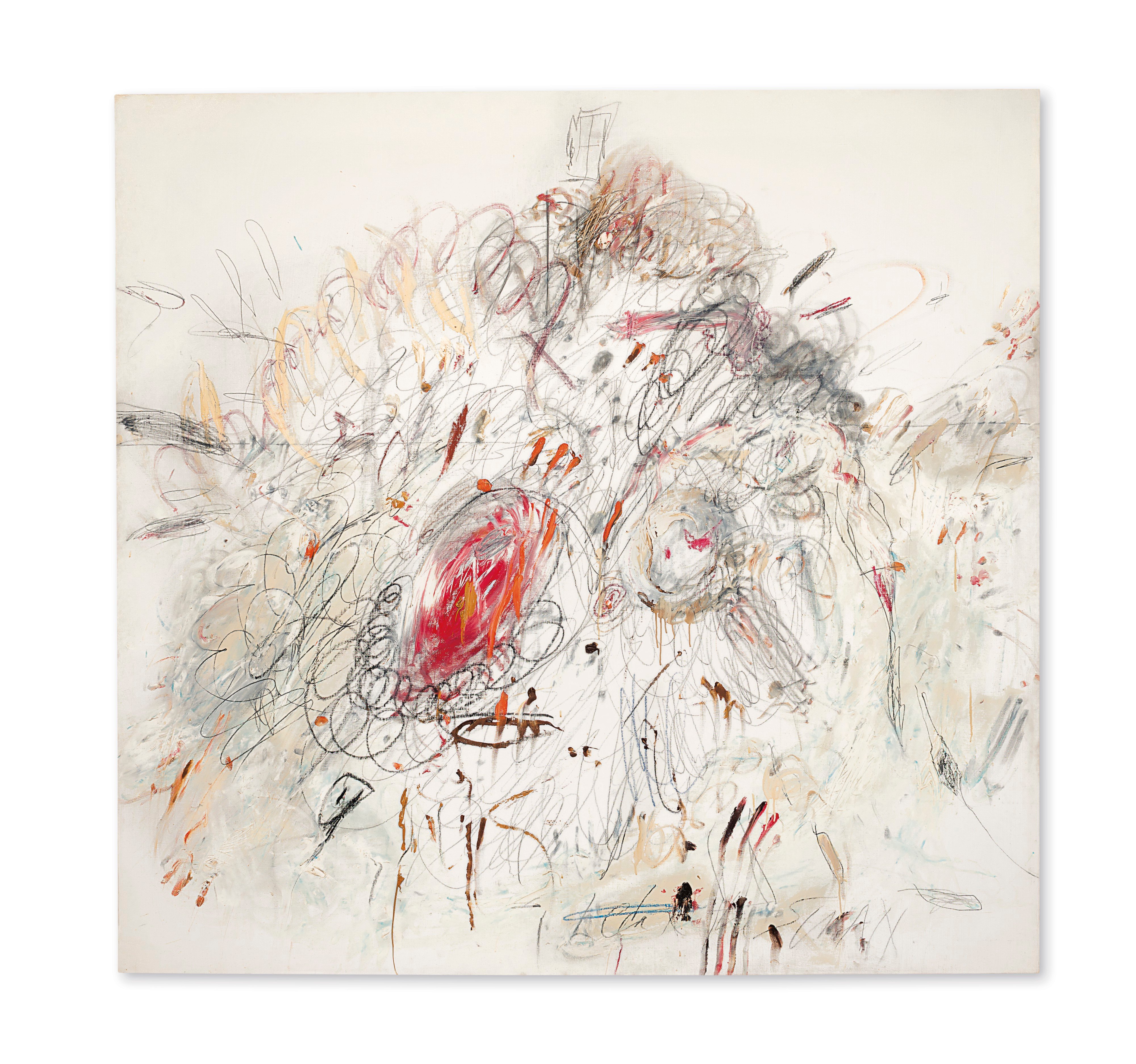
In what could become one of the artist’s highest auction sales of all time, Christie’s New York will offer a Cy Twombly canvas on May 17, tagged at up to $55 million. If Leda and the Swan (1962) makes its high estimate, it will rank as his number three price at auction, according to the artnet Price Database.
The canvas, measuring six-and-a-half-feet across, has never come to auction before, and has had just two owners; the anonymous seller has held on to the painting for some 25 years, during which it has not gone on public view. It will be part of the house’s major spring sale of postwar and contemporary art.
The offering tests not only the top of the Twombly market, but also the most rarefied heights of the art market overall, in the context of a dramatic dip from the auction market’s frenzied highs of a few years ago. According to the TEFAF 2017 Global Art Market Report, auction sales dipped nearly 19 percent from 2015 to 2016, and just a half-dozen works sold for north of $55 million in the latter year.
Only four Twombly works bearing a minimum estimate of $35 million, as does Leda and the Swan, have come to market since 2014. Moreover, in the five years from 2012 to 2016, just four works came to auction bearing a high estimate of $55 million or above.
Cy Twombly, Untitled (New York City), (1968). Courtesy Sotheby’s.
Twombly’s auction high stands at $70.5 million, fetched at Sotheby’s New York in November 2015 by Untitled (New York City), a 1968 “blackboard”-style canvas. That sale was the biggest price at a $294.9 million contemporary art auction.
Leda and the Swan features Twombly’s trademark scribbles, laid out sparsely on a white background, with a splash of red near the center and several areas where he seems to have dragged his fingers along the painting’s surface.
A more densely rendered version of the same subject, also titled Leda and the Swan and painted in Rome that same year, hangs in the collection of New York’s Museum of Modern Art.
Cy Twombly, Leda and the Swan. Courtesy of the Museum of Modern Art, New York.
“Twombly’s version of this old art-historical theme supplies no contrast of feathers and flesh but a fusion of violent energies in furiously thrashing overlays of crayon, pencil, and ruddy paint,” reads MoMA’s description of its painting. Treated by artists ranging from Michelangelo and Peter Paul Rubens to Salvador Dalí, the painting’s subject is a myth in which Jupiter takes the form of a swan in his seduction of Leda, the mother of Helen of Troy. From this union were born two sets of twins: Helen and Pollox, and Castor and Clytemnestra.
The sale follows the closing of a Twombly retrospective at Paris’s Centre Pompidou, suggesting that the heightened attention to the artist occasioned by the show may have coaxed the seller to part with the work.